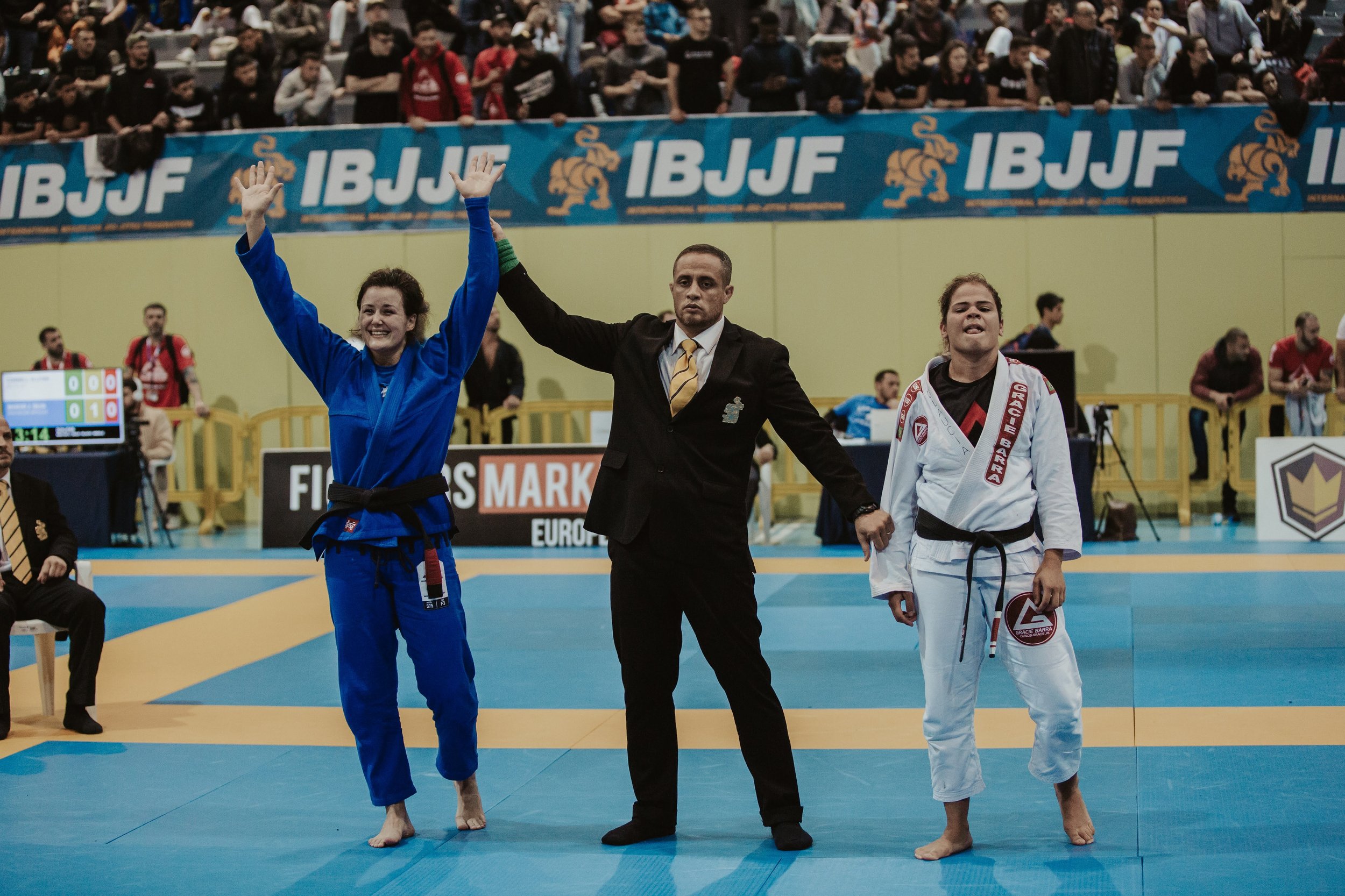
ROYAL JIU JITSU
SCHEDULE FREE TRIAL
SCHEDULE FREE TRIAL
LEARN ABOUT OUR PROGRAMMES
-
Kids Brazilian Jiu-Jitsu (BJJ) is a dynamic and engaging martial art that offers numerous benefits for children. It promotes physical fitness, enhancing coordination, balance, and flexibility while providing a fun way to burn off energy. Through BJJ, children also learn valuable life skills such as discipline, respect, and perseverance. The collaborative nature of the sport encourages teamwork and social interaction, fostering confidence and self-esteem. Additionally, Brazilian Jiu-Jitsu teaches practical self-defence techniques, empowering children to handle situations safely. Overall, kids BJJ serves as a holistic approach to personal development, combining physical activity with essential life lessons.
-
NoGi grappling is a dynamic and increasingly popular form of Brazilian Jiu-Jitsu that emphasises techniques performed without the traditional gi uniform. Practitioners typically wear form-fitting athletic attire, such as rash guards and shorts, which allows for greater mobility and quicker movement. This format changes certain grips and strategies, as the absence of sleeves and legs means there are fewer points of control. NoGi grappling often encourages a more fast-paced and exciting style of combat, with an emphasis on speed, agility, and transitions. Competitions in this discipline focus on the same submissions and positional strategies as traditional Jiu-Jitsu but require athletes to adapt to the different circumstances presented by the lack of clothing grips. Overall, NoGi grappling offers a distinct and challenging alternative, appealing to those seeking a unique grappling experience.
-
Brazilian Jiu-Jitsu (BJJ) is a martial art focused on ground fighting and submission grappling, emphasizing positional control and leverage. Key positions in BJJ include guard, mount, and side control, each having its own tactical significance in both attack and defense.
Guard: The guard position occurs when a practitioner is on their back, using their legs to control their opponent. It allows for various attack opportunities, such as sweeps and submissions. Understanding guard mechanics is crucial, as it provides a defensive framework while positioning oneself for offensive actions.
Mount: In the mount position, one practitioner sits on top of their opponent’s torso, achieving a dominant position. This allows for powerful strikes and a variety of submission options. Mastery of mount is pivotal, as it puts significant pressure on the opponent and opens up pathways to control and finish a fight.
Side Control: Side control is a transitional position where the practitioner lies perpendicular to the opponent’s body, maintaining control while limiting their movements. This position is crucial for setting up submissions and provides opportunities for progressing to dominant positions, making it essential for effective grappling.
Students begin their training by practicing fundamental movements such as shrimping and bridging. These techniques are foundational, helping to develop body awareness, mobility, and the ability to escape unfavorable positions.
Drilling specific positions and submissions, like the armbar and rear-naked choke, allows beginners to familiarize themselves with the mechanics necessary for executing these moves effectively. Repetition helps in building muscle memory, which is vital for applying techniques during sparring.
Safety and etiquette are emphasized throughout training, as students learn the importance of respecting their training partners and adhering to proper mat behavior. This conscious approach
-
Advanced Classes focus on refining techniques and enhancing performance for practitioners looking to take their skills to the next level. Our advanced curriculum includes specialized training sessions that cover complex submissions, sweeps, and positional sparring, enabling students to develop a deeper understanding of strategy and execution in high-level competition scenarios. Our commitment to fostering a supportive environment helps students grow both individually and as part of a team, leading to improved performance and increased confidence on the mats.
-
NoGi grappling is a form of submission wrestling that is practiced without the traditional gi (uniform) worn in Brazilian Jiu-Jitsu (BJJ). Instead, practitioners wear lightweight athletic clothing, such as rash guards and shorts. This style often emphasises speed, agility, and explosive movements due to the lack of grips that a gi provides.
In NoGi grappling, techniques are adapted to account for the reduced ability to grip clothing. Therefore, practitioners frequently rely on body positioning, leverage, and effective use of underhooks and overhooks to control their opponents. Common techniques include various submissions such as chokes and joint locks, alongside positional advances like passing the guard or achieving dominant positions.
NoGi grappling is often associated with mixed martial arts (MMA), where fighters must be adept in both grappling and striking. Tournaments and competitions in NoGi format are popular and typically feature weight classes and timed matches, contributing to an energetic and dynamic atmosphere.
Training NoGi can enhance a grappler's overall skill set, as it encourages adaptability and the development of techniques that can be employed in both NoGi and gi contexts. The absence of a gi can also heighten the challenge of maintaining control over the opponent, encouraging practitioners to focus on timing and precision.


